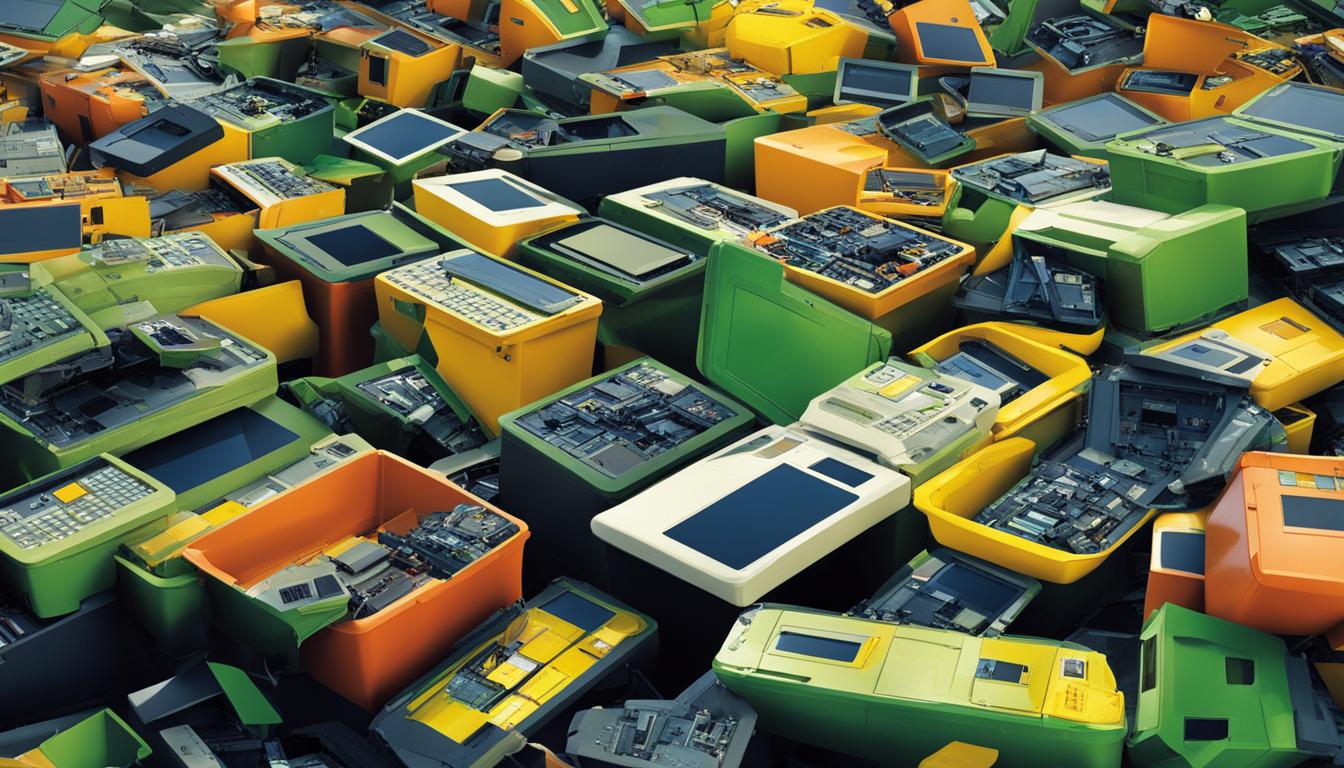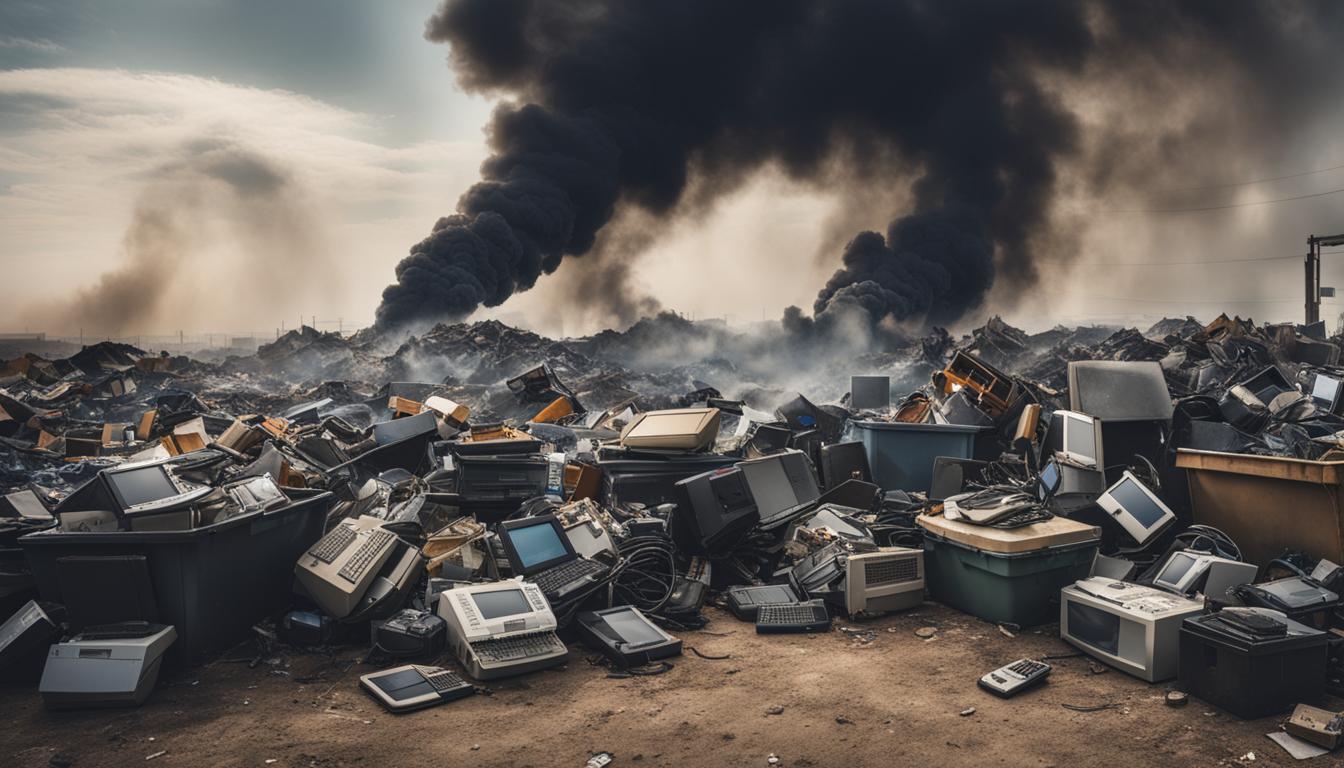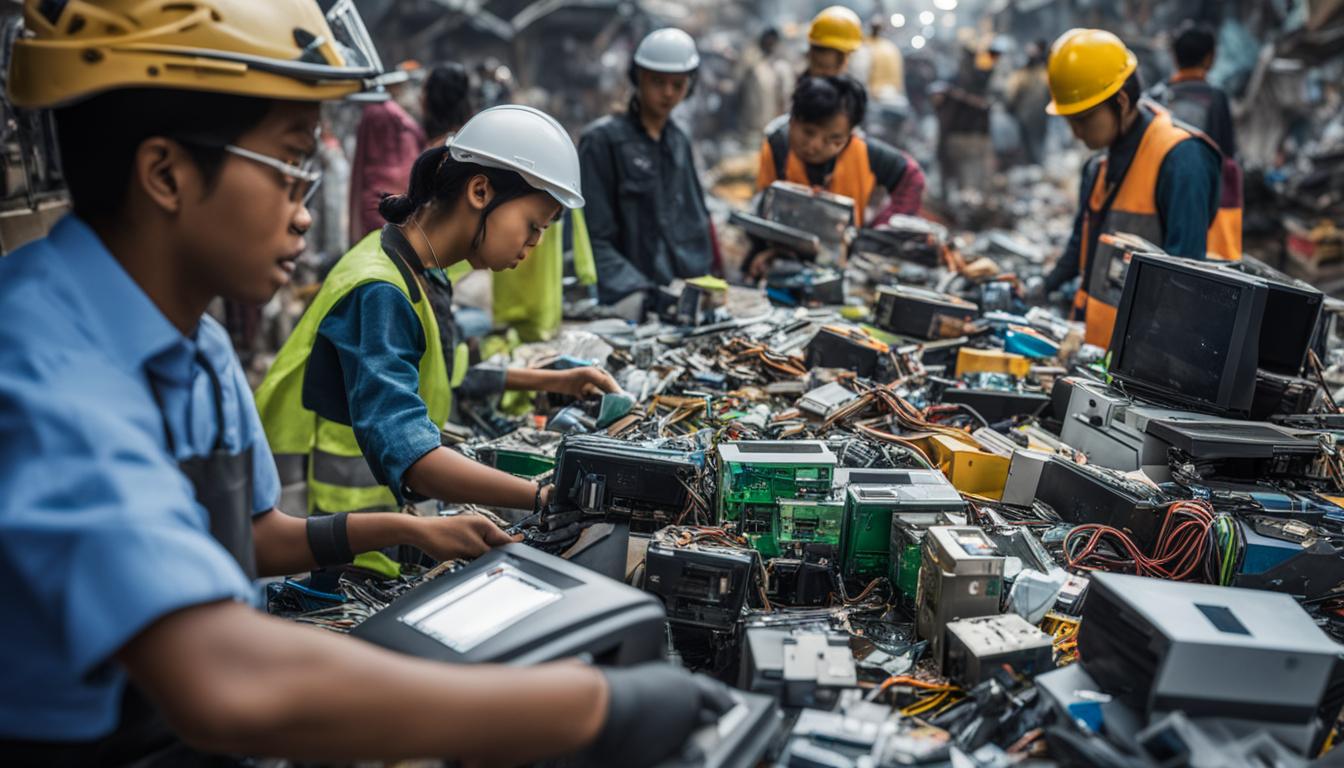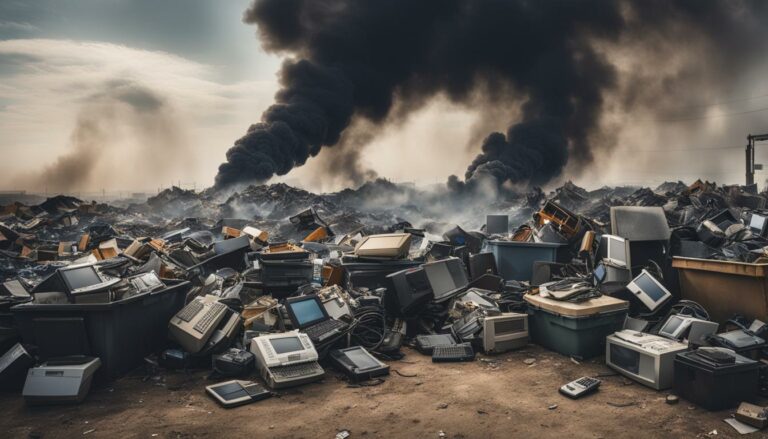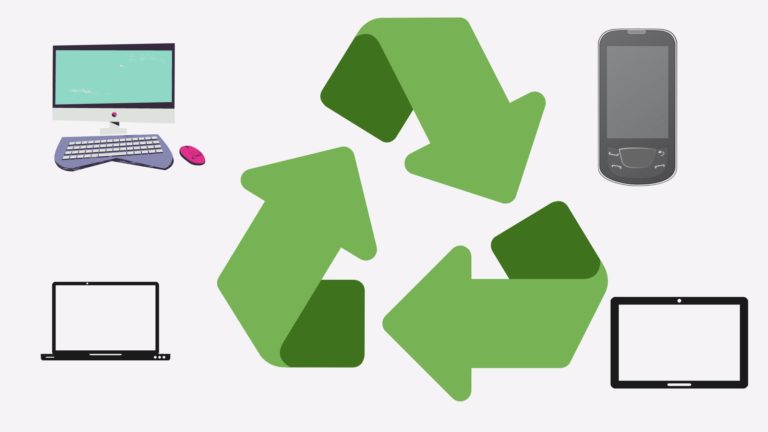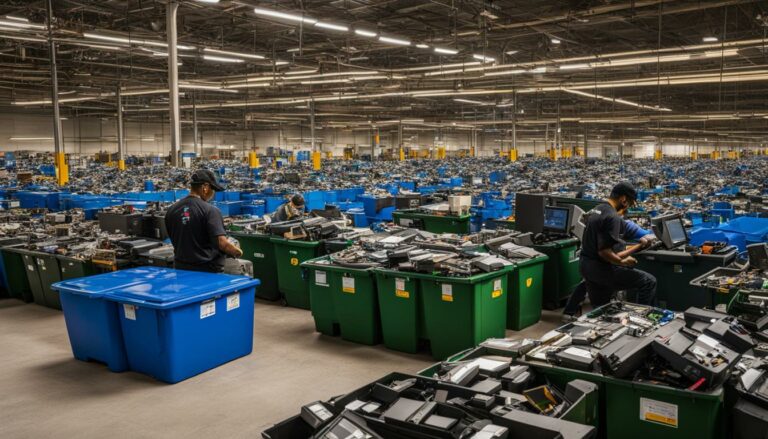Decoding the E-waste Problem: Facts and Figures
E-waste, or electronic waste, refers to discarded electrical or electronic devices. It is also known as waste electrical and electronic equipment (WEEE) or end-of-life electronics. E-waste can be found in various forms, including old computers, smartphones, televisions, and other electronic gadgets. Improper processing of e-waste can lead to adverse effects on human health and the environment. The Digital Revolution and the constant release of new electronic models contribute to the exponential increase in e-waste. Recycling and proper disposal of e-waste are crucial to reduce the environmental impact and prevent the release of hazardous materials into the ecosystem.
Key Takeaways
- E-waste refers to discarded electrical or electronic devices.
- Improper processing of e-waste can have adverse effects on human health and the environment.
- The Digital Revolution and constant release of new electronic models contribute to the exponential increase in e-waste.
- Recycling and proper disposal of e-waste are crucial to reduce the environmental impact and prevent the release of hazardous materials.
- Proper e-waste management is essential to minimize the environmental consequences of e-waste.
The Environmental Impact of E-waste
E-waste, if not managed properly, can have severe environmental consequences. The discarded electronic devices contain hazardous materials like lead, cadmium, and brominated flame retardants. When these materials are not handled correctly, they can contaminate the soil, water, and air, posing a significant risk to human health and the ecosystem. Additionally, the growing amount of e-waste puts pressure on landfills, leading to the release of toxic substances into the environment.
Appropriate e-waste management and recycling are crucial in minimizing the environmental impact caused by electronic waste. By recycling e-waste, valuable resources can be recovered and reused, reducing the need for mining new raw materials. Furthermore, recycling prevents the release of hazardous substances into the environment, ensuring the safety of both humans and nature. It is essential for individuals, businesses, and governments to prioritize proper e-waste disposal and recycling.
“The improper handling of e-waste can lead to adverse human health effects and environmental pollution. Responsible e-waste management is not only a legal obligation but also a crucial step towards protecting our planet’s future.”
The Need for Effective E-waste Management
Table: E-waste Hazardous Materials and Their Impact on the Environment
| Hazardous Material | Impact on the Environment |
|---|---|
| Lead | Poisonous to plants, animals, and humans; can contaminate water sources |
| Cadmium | Accumulates in the body and causes damage to the kidneys, liver, and bones; harmful to the environment |
| Brominated Flame Retardants | Persists in the environment, can be toxic to aquatic organisms, and may disrupt the endocrine system |
Proper e-waste management is crucial to safeguard the environment and preserve valuable resources. It requires the implementation of effective recycling programs, the promotion of responsible disposal practices, and the collaboration of various stakeholders. By adopting these measures, we can mitigate the environmental impact of e-waste and contribute to a more sustainable future.
Note: The image above emphasizes the importance of proper e-waste management to minimize the environmental impact.
E-waste Statistics and Recycling Efforts
When it comes to e-waste, the numbers are staggering. In 2018, an estimated 50 million tonnes of electronic waste was generated globally, with a value of at least $62.5 billion annually. However, the sad reality is that only a small percentage of this e-waste is properly recycled. A mere 7.5% of the total office waste that is recyclable actually reaches the recycling facility. These statistics highlight the urgent need to improve e-waste recycling efforts and raise awareness among individuals and businesses alike.
Implementing effective e-waste recycling programs is crucial for reducing the environmental impact of electronic waste. By recycling e-waste, valuable resources can be conserved, and the release of hazardous materials into the ecosystem can be prevented. Additionally, responsible electronic waste disposal is essential for minimizing the negative effects on human health and the environment.
| Year | E-waste generated (tonnes) |
|---|---|
| 2015 | 41.8 million |
| 2016 | 44.7 million |
| 2017 | 48.5 million |
| 2018 | 50 million |
Source: E-waste Statistics Report
Efforts to tackle the e-waste problem should focus on improving awareness and accessibility to e-waste recycling facilities. Promoting responsible electronic waste disposal among individuals, businesses, and governments is crucial. By actively participating in e-waste collection drives and collaborating with certified e-waste recyclers, we can contribute to reducing the environmental impact of e-waste and working towards a more sustainable future.
The Urgency for Responsible E-waste Management
The exponential growth of e-waste poses a pressing need for responsible disposal and effective e-waste management. Improper handling and disposal of electronic waste can have severe consequences for both the environment and human health. It is crucial for individuals, businesses, and governments to take immediate action to address this urgent issue. By embracing responsible e-waste management practices, we can protect our planet and safeguard future generations.
The improper handling of e-waste, particularly in developing countries, can result in the release of hazardous substances into the environment. Heavy metals such as lead, cadmium, and mercury, which are commonly found in electronic devices, can contaminate soil, water sources, and the air. This contamination poses a significant risk to ecosystems and can have detrimental effects on human health, including respiratory problems, neurological disorders, and even cancer.
To tackle the e-waste problem effectively, collaboration among various stakeholders is key. Governments should implement strict regulations and establish comprehensive e-waste management systems that encourage responsible disposal and recycling. Businesses can play a vital role by partnering with certified e-waste recyclers and adopting sustainable practices throughout their supply chains. Additionally, individuals can contribute by participating in e-waste collection drives and educating themselves about the importance of responsible e-waste management.
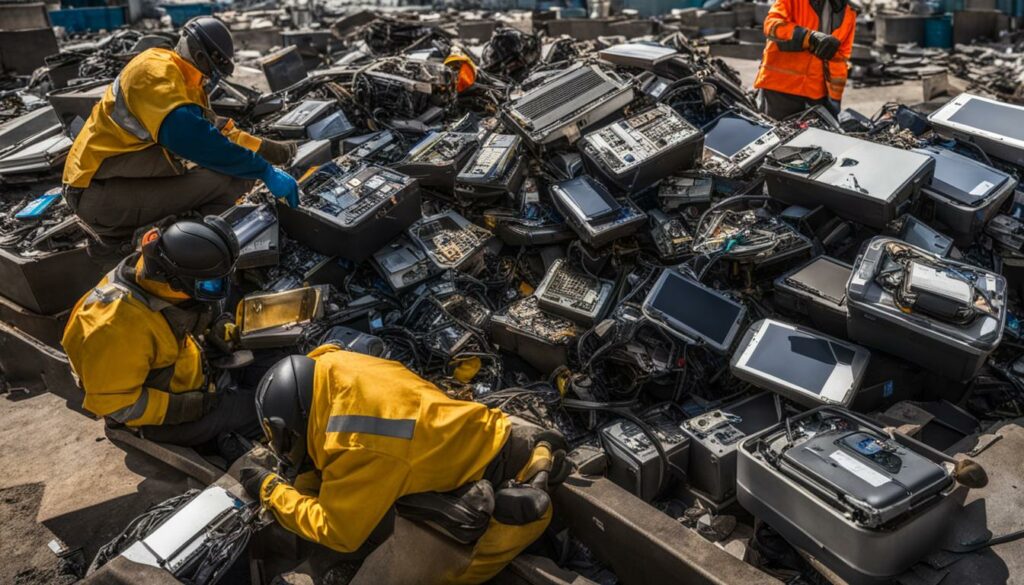
By prioritizing responsible e-waste management, we can mitigate the environmental and health risks associated with electronic waste. Recycling and proper disposal of e-waste allow for the recovery of valuable resources and reduce the need for raw materials extraction. Furthermore, responsible e-waste management promotes circular economy principles by extending the lifespan of electronic devices and minimizing waste generation.
| Benefits of Responsible E-waste Management | |
|---|---|
| 1 | Prevents pollution of soil, water, and air |
| 2 | Reduces the demand for raw materials |
| 3 | Conserves energy |
| 4 | Minimizes greenhouse gas emissions |
| 5 | Creates job opportunities in the recycling sector |
The urgency for responsible e-waste management is clear. It is essential for all individuals, businesses, and governments to prioritize the proper disposal and recycling of electronic waste. By doing so, we can mitigate the adverse environmental and health impacts of e-waste, conserve valuable resources, and promote a more sustainable future for all.
Conclusion
Decoding the e-waste problem requires a deep understanding of the facts and figures surrounding electronic waste. The exponential increase in e-waste calls for urgent action to minimize its environmental impact and properly manage its disposal. Recycling, responsible e-waste management, and raising awareness about the importance of electronic waste disposal are essential steps toward a more sustainable future. By addressing the challenges of e-waste through recycling programs, collaboration, and responsible practices, we can protect the environment and conserve valuable resources.
FAQ
What is e-waste?
E-waste refers to discarded electrical or electronic devices, including old computers, smartphones, televisions, and other electronic gadgets.
Why is proper processing of e-waste important?
Improper processing of e-waste can have adverse effects on human health and the environment. It can lead to the release of hazardous materials into the ecosystem.
What are the environmental consequences of improper e-waste disposal?
Improper disposal of e-waste can contaminate soil, water, and air with hazardous materials such as lead, cadmium, and brominated flame retardants. It also adds pressure on landfills, leading to further release of toxic substances into the environment.
How much e-waste is generated globally?
In 2018 alone, an estimated 50 million tonnes of e-waste was reported globally, with a value of at least $62.5 billion annually.
What percentage of e-waste is properly recycled?
Unfortunately, only a small percentage of e-waste is properly recycled. Approximately 70% of total office waste is recyclable, yet only 7.5% reaches the recycling facility.
What can individuals and businesses do to improve e-waste recycling efforts?
Individuals and businesses can collaborate with certified e-waste recyclers, implement e-waste collection drives, and educate employees about the importance of responsible e-waste management.
How does improper e-waste handling affect developing countries?
Improper handling of e-waste in developing countries can lead to adverse human health effects and environmental pollution.

